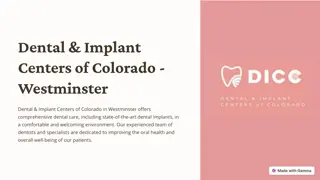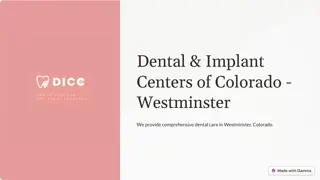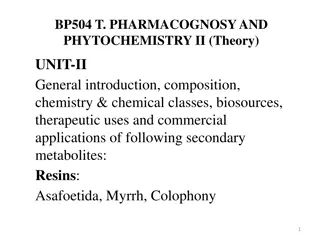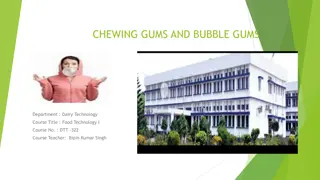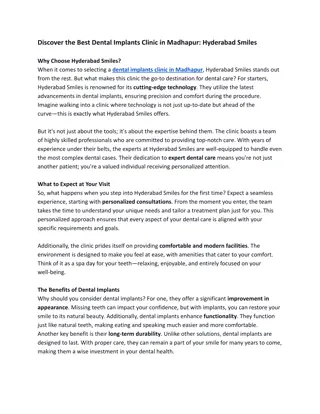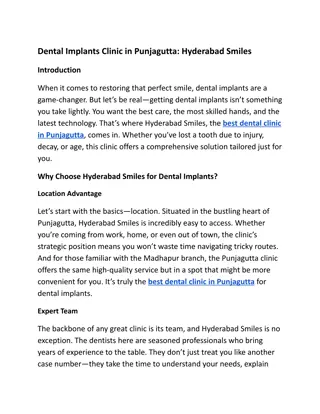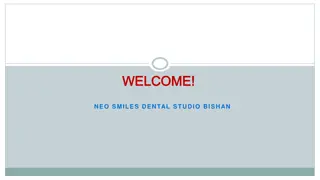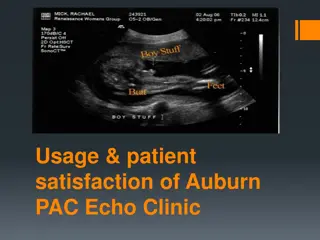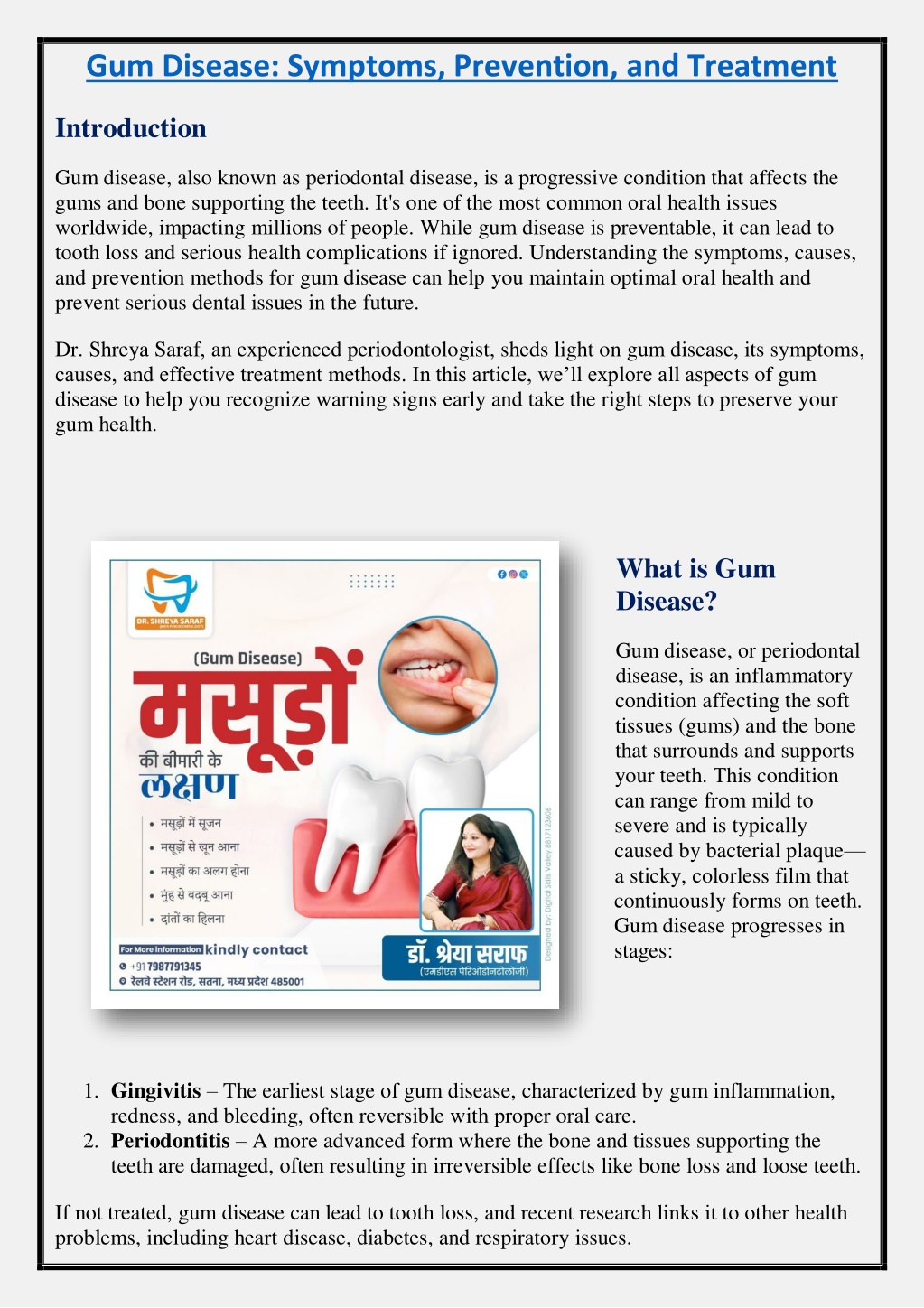
Treatment of Gum Disease - Saraf dental clinic
This poster by Dr. Shreya Saraf (MDS Periodontology) highlights the symptoms of Gum Disease and encourages timely care for oral health.nnSymptoms of Gum Disease:nSwelling in gumsnBleeding from gumsnGums receding or pulling away from teethnBad b
Download Presentation

Please find below an Image/Link to download the presentation.
The content on the website is provided AS IS for your information and personal use only. It may not be sold, licensed, or shared on other websites without obtaining consent from the author. Download presentation by click this link. If you encounter any issues during the download, it is possible that the publisher has removed the file from their server.
E N D
Presentation Transcript
Gum Disease: Symptoms, Prevention, and Treatment Introduction Gum disease, also known as periodontal disease, is a progressive condition that affects the gums and bone supporting the teeth. It's one of the most common oral health issues worldwide, impacting millions of people. While gum disease is preventable, it can lead to tooth loss and serious health complications if ignored. Understanding the symptoms, causes, and prevention methods for gum disease can help you maintain optimal oral health and prevent serious dental issues in the future. Dr. Shreya Saraf, an experienced periodontologist, sheds light on gum disease, its symptoms, causes, and effective treatment methods. In this article, we ll explore all aspects of gum disease to help you recognize warning signs early and take the right steps to preserve your gum health. What is Gum Disease? Gum disease, or periodontal disease, is an inflammatory condition affecting the soft tissues (gums) and the bone that surrounds and supports your teeth. This condition can range from mild to severe and is typically caused by bacterial plaque a sticky, colorless film that continuously forms on teeth. Gum disease progresses in stages: 1.Gingivitis The earliest stage of gum disease, characterized by gum inflammation, redness, and bleeding, often reversible with proper oral care. 2.Periodontitis A more advanced form where the bone and tissues supporting the teeth are damaged, often resulting in irreversible effects like bone loss and loose teeth. If not treated, gum disease can lead to tooth loss, and recent research links it to other health problems, including heart disease, diabetes, and respiratory issues.
Symptoms of Gum Disease Recognizing the early symptoms of gum disease can make a significant difference in preventing its progression. Here are some common symptoms: 1.Swelling in the Gums oOne of the earliest signs of gum disease is gum swelling. Healthy gums should be firm, light pink, and snug around the teeth. Swollen, red, or tender gums may indicate an early infection or inflammation due to plaque accumulation. 2.Bleeding Gums oIf your gums bleed while brushing or flossing, this is often a sign of gingivitis. While bleeding may seem minor, it indicates that your gums are irritated and possibly infected. Healthy gums don t typically bleed, so consider this an early warning sign. 3.Gum Recession (Gums Pulling Away) oAs gum disease progresses, gums may begin to pull away from the teeth, creating pockets where bacteria can accumulate. Gum recession can make your teeth appear longer and increase sensitivity, particularly to hot and cold. 4.Bad Breath (Halitosis) oPersistent bad breath, also known as halitosis, can be a sign of gum disease. Plaque buildup and decaying food particles cause a foul odor in the mouth. When bacteria release toxins, they contribute to bad breath and a bad taste in the mouth, which may persist despite brushing and rinsing. 5.Loose Teeth or Tooth Mobility oAdvanced gum disease can lead to the loosening of teeth. As the tissues and bones that support teeth become damaged, teeth may shift or loosen. In severe cases, untreated periodontitis can lead to tooth loss. 6.Pus Formation or Abscesses oIn severe cases, gum disease can lead to the formation of pus or abscesses around the gum line, indicating an infection that requires immediate treatment. This condition can be painful and cause swelling in the surrounding areas. If you re experiencing any of these symptoms, it s crucial to visit a dentist, as early treatment can help prevent further complications. Prevention of Gum Disease Preventing gum disease largely revolves around consistent oral care and healthy lifestyle choices. Here are some preventive steps: 1.Brush and Floss Daily oBrush your teeth at least twice a day with fluoride toothpaste and floss daily. Brushing removes plaque from the surfaces of your teeth, while flossing clears plaque and food particles from between the teeth and gum line.
2.Use an Antibacterial Mouthwash oRinsing with an antibacterial mouthwash can help kill bacteria that brushing and flossing might miss. Look for a mouthwash that targets plaque and bacteria associated with gum disease. 3.Regular Dental Checkups oSchedule regular dental checkups and cleanings every six months. Professional cleanings remove tartar and plaque from areas that your toothbrush and floss can t reach. Your dentist can also spot early signs of gum disease and provide treatment before it worsens. 4.Quit Smoking oQuitting smoking or using tobacco products can reduce the risk of gum disease and improve overall health. Tobacco affects the gums ability to repair and increases the risk of severe gum issues. 5.Eat a Balanced Diet oMaintain a balanced diet rich in fruits, vegetables, and whole grains. Foods high in vitamins and minerals, especially Vitamin C, are essential for gum health. Avoid sugary snacks and beverages, as sugar promotes bacterial growth. 6.Manage Stress oReducing stress through activities like exercise, meditation, and adequate sleep can improve immune function, making your body better equipped to fight off infections, including gum disease. Treatment Options for Gum Disease If you re already experiencing symptoms of gum disease, various treatment options are available, depending on the severity of the condition. 1.Professional Cleaning (Scaling and Root Planing) oFor mild cases, a deep cleaning procedure known as scaling and root planing may be recommended. Scaling removes plaque and tartar from above and below the gum line, while root planing smooths rough spots on the tooth roots to discourage bacteria from gathering. 2.Medications oYour dentist may prescribe antibiotic mouth rinses, gels, or oral antibiotics to reduce bacterial infection. These are often used in combination with scaling and root planing for more effective results. 3.Surgical Treatments oFor advanced gum disease, surgical procedures like flap surgery, soft tissue grafts, and bone grafts may be necessary to restore damaged tissue and bone. These procedures help rebuild the gum and bone support around the teeth. 4.Laser Therapy oSome dentists use laser therapy as a minimally invasive option to target and remove infected gum tissue. Laser treatment can be effective in reducing inflammation and promoting faster healing. 5.Maintenance Therapy
Once youve undergone treatment for gum disease, its essential to maintain regular dental visits and cleanings to prevent recurrence. Maintenance therapy may include more frequent cleanings and additional checkups. Conclusion Gum disease is a serious but preventable condition that can affect your oral health and overall well-being. Recognizing the symptoms early and taking preventive measures, such as regular brushing, flossing, and dental visits, can help keep your gums healthy. If you notice signs like swelling, bleeding, or bad breath, don t ignore them seek professional advice. For those in need of specialized periodontal care, Dr. Shreya Saraf is available for consultations. Her clinic offers comprehensive gum disease treatment and preventive care. Contact Dr. Shreya Saraf Phone: +91 7987791345 Whatsapp : https://wa.me/917987791345 Location: Railway Station Rd, Satna, Madhya Pradesh 485001 Instagram - https://www.instagram.com/shreyasarafdental/ Facebook - https://www.facebook.com/shreyasarafdental Twitter - https://x.com/sarafdental Pinterest - https://in.pinterest.com/shreyasarafdental/ Linkedin - https://www.linkedin.com/in/shreyasarafdental/ Taking care of your gums is an investment in your long-term health. Remember, a healthy smile begins with healthy gums!









